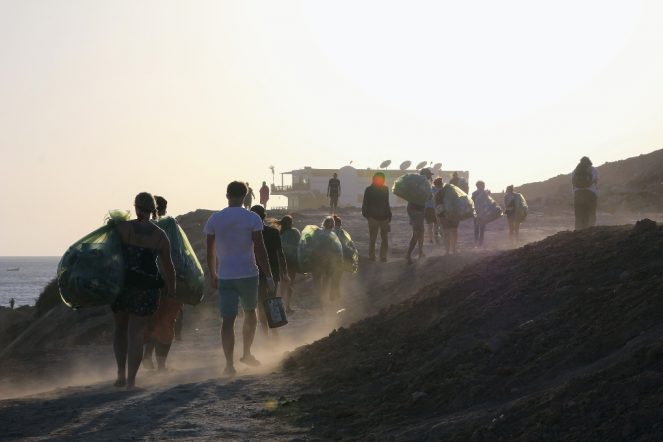
John Muir Trust’s new visitor management report lays bare tourism dilemma for rural communities, as Highlands prepares for summer influx.
Scotland’s scenery is one of our most valuable assets and tourism is an important and growing part of the economy – supporting over 200,000 jobs and contributing more than £7 billion nationally. But the successful promotion of Scotland’s rugged and remote landscapes has not come without a cost.
A new report published by the John Muir Trust confirms that tourism is increasingly viewed as a double-edged sword by many local communities who are on the frontline of dealing with visitor pressures and opportunities.
To gain a better understanding of the practical problems caused by growing visitor numbers, the Trust interviewed 37 community representatives living in remote but popular tourist destinations in Highland Perthshire, Lochaber, Skye, Lewis, Harris, Assynt Isles and North West Sutherland.
The report – Frontline Realities: Rural Communities and Visitor Pressures – reveals widespread problems, with 97 per cent of interviewees reporting concerns over litter, human waste, congestion on local roads and inappropriate ‘wild’ camping.
As one interviewee explained, “the physical volume of visitors is starting to exceed the infrastructure… capacity has been reached and exceeded”.
Rural Communities
Cecilie Dohm, our Policy Officer and lead author of the report, said: “Locals understand the need to maintain and nurture tourism, which is the economic lifeblood of many communities in our most fragile and sparsely populated areas. At the same time, they feel strongly that existing levels of investment in rural infrastructure and resources is inadequate and unable to deal with the rising numbers and pressures.
“With severe restrictions on international travel likely to remain in place for the near future, this summer is likely to see a huge wave of visitors from across the UK into some of our most popular destinations. We believe that we need to empower local communities and ensure they have a valid voice in the key decision-making processes that affect them.”
The Trust welcomed the recent announcement by the Scottish Government to double the Rural Tourism Infrastructure Fund to £6 million in 2021-2022 and wants to maintain that funding into the future. But local authority cuts have already had an impact.
“Many rural communities have experienced a reduction in essential facilities like public toilets, bin collections and countryside ranger services,” said Cecilie. “Without adequate infrastructure in place, the increasing visitor pressures may damage local areas and detract from the very things that bring people to the Highlands and Islands in the first place.”
Based on the feedback from interview participants and experience as land managers, the Trust recommends practical and policy solutions ahead of the summer 2021 wave of visitors, including:
- Local communities should be actively involved in planning visitor management.
- As part of a green recovery from Covid-19, the Scottish Government should develop strategic targeting of funding for rural infrastructure, directing it to where it is most needed.
- The Scottish Government should promote awareness of the Scottish Outdoor Access Code (SOAC) and the principle of ‘leave no trace’ so that people can appreciate and enjoy wild places responsibly without disruption to local communities.
- Campervan hire companies should be required provide tourists with appropriate guidance on the SOAC, how to navigate single track roads, and how to dispose of waste.
- VisitScotland should promote ‘slow’ tourism and encourage multiple night stays rather than fleeting visits, in order to maximise local economic value and minimise the carbon footprint of tourism.
- VisitScotland should seek to spread out visitor numbers geographically by reducing its focus on high-profile hot-spots and encouraging people to discover some of our lesser-known areas of wild beauty.
This press release was originally published as Frontline realities: rural communities and visitor pressures by John Muir Trust.